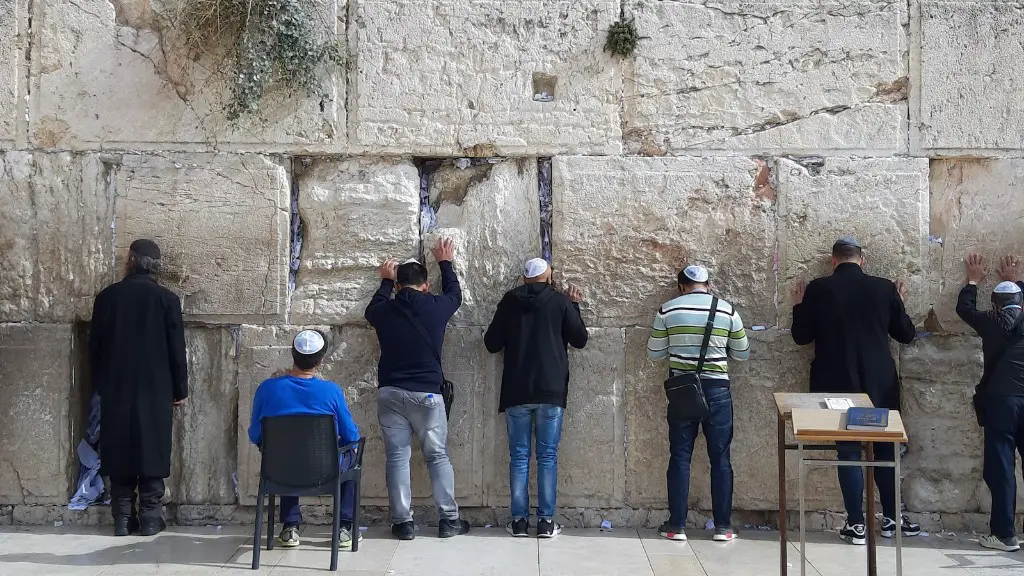The Influential Role of Moses in the Jewish Religion
Moses is one of the most important figures in Judaism, as he is seen as the primary messenger between God and the Jewish people. The Hebrew Bible, also known as the Tanakh, features many stories of Moses’ leadership and divine interventions. In these stories, God gives Moses a mission to lead the Children of Israel out of Egypt and into the promised land, providing them with laws to live by and a connection to their God. Even to this day, Moses’ legacy continues to shape the Jewish faith and culture.
The Unique Relationship Between Moses and God
Moses’ relationship with God is one of the most significant stories in the Bible. The narrative of Moses’ personal journey with God is documented in the books of Exodus and Deuteronomy. It is in these books that God speaks directly to Moses, giving him instructions on how to lead the Jewish people. Moses is a mediator between the Hebrew people and their God, leading them through the wilderness to the promised land. This intimate relationship allows the Jewish people to understand God and connects them to Him in a profound way.
Moses as a Role Model for the Jewish People
Moses’ actions provide a model of how the Jewish people should conduct themselves in their lives. He kept divine laws, willingly followed God’s commands, and was humble and devoted. His story serves as an example for Jewish people of how to live a life of faith and righteousness. Passages from the Bible praising Moses for his righteousness are read in synagogues and are seen as a reminder of what it means to live a life of faith.
Moses as a Significant Figure in the Torah
Moses is a major figure in the Torah, the main book of the Jewish faith. He is mentioned over 150 times in the Torah, a testament to his importance. Through Moses, God reveals laws and statutes to the Jewish people and provides them with guidance and direction. Moses is seen as a prophet delivering the word of God to the people, teaching them to love and revere their creator.
The Symbol of Laws Revealed By Moses
Moses is seen as the father of the modern Judeo-Christian law code. The Ten Commandments and other Jewish laws were revealed to the Jewish people through Moses. He is seen by the Jewish people as the bearer of these laws and the founder of their religion. Through Moses, the Jewish people were given a set of laws to live by, which are seen as a cornerstone of the Jewish religion and an example of how all humans should act in their lives.
The Significance of Moses’ Death
Moses’ death is recorded in the Book of Deuteronomy and is seen by the Jewish people as a significant event in their history. His death is seen as a great loss to the Jewish people, as they no longer have a mediator between them and their God. Despite this, the Jewish people recognise his importance and honour his memory.
The Legacy of Moses
Moses’ legacy continues to shape the Jewish faith and culture. His teachings are still seen as the foundation of the Jewish faith and the primary source of what it means to be a Jew. His influence is still seen today wherever Jews practice and celebrate their faith, and his teachings have been a source of spiritual guidance and inspiration for centuries.
Moses in Modern Culture
Moses has become a symbol of faith, hope and courage. His legacy is celebrated in films, television shows, books and artwork. His example of righteousness and faith has been a source of inspiration for many, and his teachings continue to be a source of comfort and guidance.
Moses and His Place in the Rabbinic Tradition
Moses is a revered figure in the rabbinic tradition and the stories of his revelations are still studied and discussed today. Rabbis continue to debate and explore the meaning of these stories and their influence on the Jewish people. Moses is seen as a messenger of God and a leader for the Jewish people, and his story continues to inspire and bring hope to many.
The Impact of Moses on Jewish Identity
Moses is seen as the father of the nation of Israel and his influence is still seen in the modern Jewish community. For many Jewish people, their sense of identity is deeply rooted in the stories and teachings of Moses. He is seen as a symbol of courage, resilience, and loyalty to their faith, and is held in high esteem.
Moses Through Time – Jewish Perspectives
Moses remains a deep source of pride and validation for the Jewish people. Through the millennia, Moses has been a source of spiritual guidance and a beacon of hope in difficult times. In today’s world, the legacy of Moses continues to provide strength and courage to Jews around the world.
How Has Moses Influenced Political Movements?
Moses has often been seen as a symbol of Jewish resistance and strength in the face of adversity. His story has been a source of inspiration for Jewish people during times of struggle. Moses’ leadership during the Exodus has been likened to the struggle of oppressed people for freedom and justice throughout history.
The Spiritual Impact of Moses
Moses is a spiritual figure for many Jewish people and his teachings are seen as essential to their faith. He is invoked in prayer and meditation and is seen as a source of comfort. Moses’ example of morality and obedience to God’s law is used as a teaching for Jewish children, inspiring them with the power of righteousness and faith.
How Has Moses Impacted Jewish Culture?
Moses’ legacy continues to shape Jewish culture. His teachings are referenced in Jewish literature, artwork, music, film, and television. He is commemorated in Torah readings, prayer books and synagogue services, inspiring Jews to observe the laws and customs of the faith. His story is taught to children of all ages, reminding the Jewish people of the importance of living a life of faith and righteousness.


